Kohlrabi, also known as cabbage turnip or German turnip, is a vegetable with large leaves that many people compare to beetroot. It is related to cabbage, cauliflower, broccoli, Brussels sprouts, kale, and collard greens in the vegetable family. With this, it is safe to say this is good for humans and pets, including guinea pigs.
Yes, guinea pigs can eat kohlrabi. This veggie has good nutrients that the guinea pig needs, such as the essential vitamin C. There are other nutrients as well, so this veggie is a great addition to the guinea pig diet. It is best to feed them kohlrabi twice a week.
Table of Content
Is Kohlrabi Good for Guinea Pigs? | Health Benefits
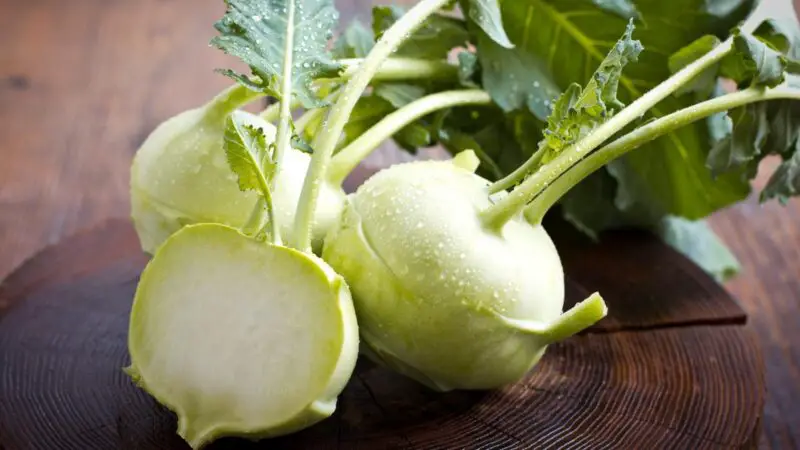
This veggie doesn’t contribute to rapid weight gain because it is low in calories, carbs, and proteins. These are the main factors that increase weight when consumed in excess.
In kohlrabi, there are some very beneficial and strong antioxidants. For instance, vitamin A, manganese, and selenium. Vitamin A keeps the bones, soft tissues, teeth, white blood cells, and the whole immune system healthy. Manganese reduces the risk of diseases, reduces inflammation and it normalizes the sugar levels in the blood. Selenium reduces the risk of some cancers, as well as heart diseases.
There is vitamin C in kohlrabi, and this is almost all your cavy needs. This is the one and only essential vitamin needed for the health and survival of guinea pigs. With a lack of vitamin C, guinea pigs can get scurvy.
The iron and copper in kohlrabi contribute to healthier blood that will be less prone to anemia. Iron is a vital mineral that fights anemia and gives energy and boosts the immune system. The copper creates new red blood cells, and this mineral also helps with better absorption of iron.
Nutrition Facts on Kohlrabi
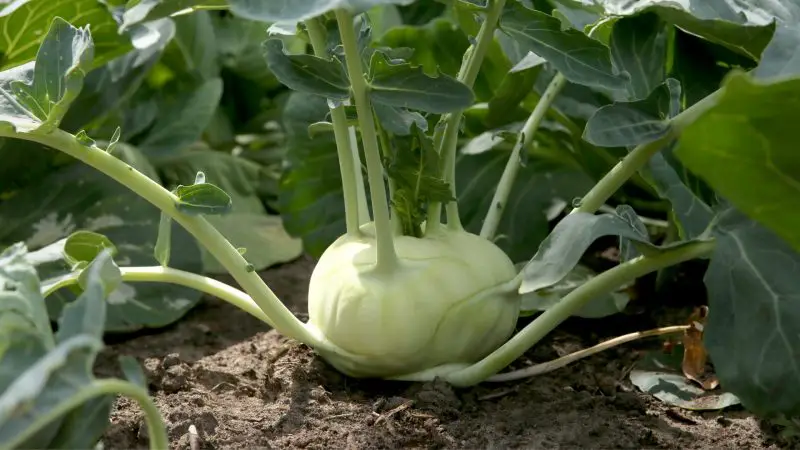
Here are the nutrition facts for 100 g (3 oz) of raw kohlrabi:
- Low in calories – 27
- Low in carbs – 6.2g
- Low in protein – 1.7g
- Fibers – 3.6g
- Sugars – 2.6g
- Vitamin A – 1%
- Vitamin C – 103%
- Vitamin E – 2%
- Thiamin – 3%
- Riboflavin – 1%
- Niacin – 2%
- Vitamin B6 – 8%
- Pantothenic acid – 2%
- Calcium – 24mg
- Iron – 2%
- Magnesium – 5%
- Phosphorus – 46mg
- Potassium – 10%
- Copper – 6%
- Manganese – 7%
- Selenium – 1%
Can Kohlrabi Be Bad for Guinea Pigs? | Possible Risks
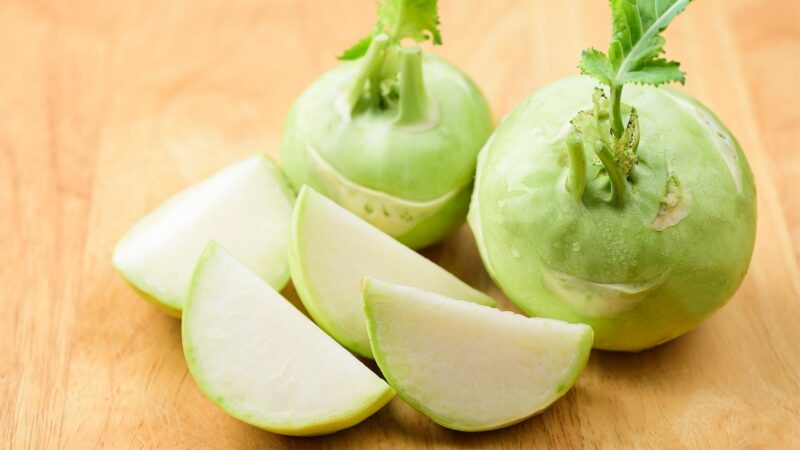
- Urinary complications – This veggie contains calcium and phosphorus. These two nutrients are harmful to guinea pigs if they consume them in large amounts. They can create kidney and bladder stones, or cause bloody urine, painful urination, or even frequent urinary infections.
- Digestion problems – There is a small amount of sugar in kohlrabi but you should still be careful. Sugar can’t be properly digested by cavies, and it causes stomach pains, bloating, or cramps to them.
Serving Size, Frequency, and Preparation of Kohlrabi for Guinea Pigs
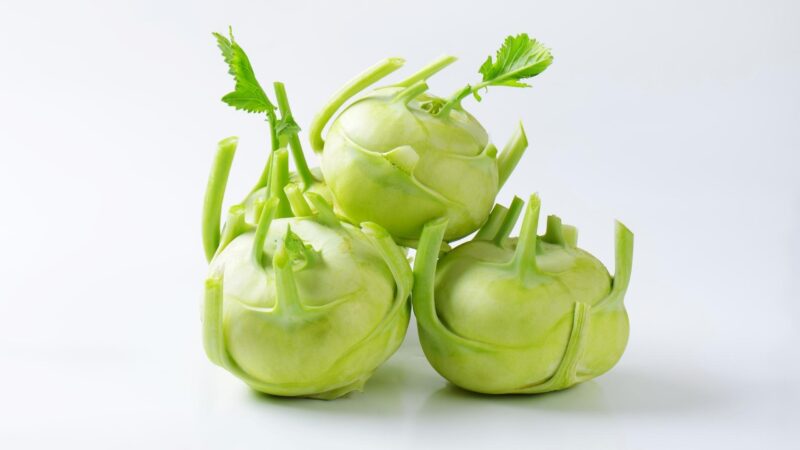
The serving size of kohlrabi shouldn’t be too big, because otherwise, it may cause bloating. A small chunk/piece is generally a good serving size. For example, 3 cm of the bulb is perfect or if you serve the leaves, then give one medium size leaf. As far as frequency, 2 times per week is more than enough.
The preparation is simple. Do not cook the kohlrabi because guinea pigs cannot eat cooked food. Also, you must peel the bulb before you cut a piece of it for the cavy. If you give him the leaves, rinse them well with water. The same goes for the bulb, rinse and peel it.
More Information About Guinea Pigs and Kohlrabi
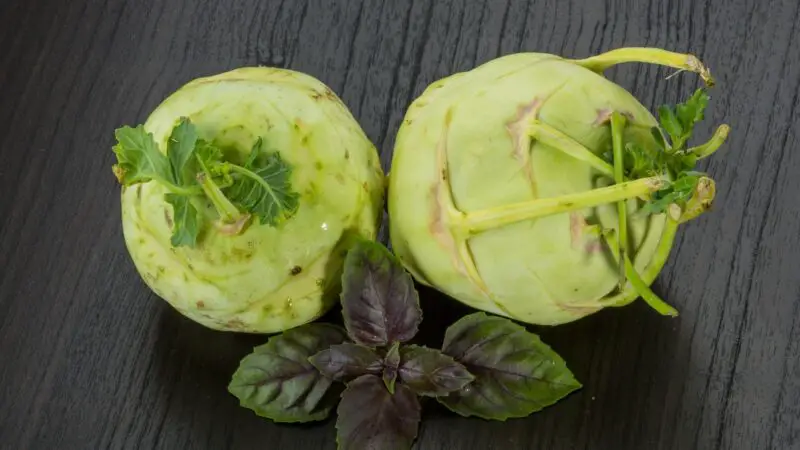
What If My Guinea Pig Consumes Cooked Kohlrabi?
The cavy will survive if they consume cooked kohlrabi. However, they will most likely have stomach pains, or bloating and digestion problems. The stomachs of guinea pigs are not designed to digest cooked foods well, so give only raw kohlrabi and its leaves.
What Other Veggies Can Be Served Together With the Kohlrabi?
Make a tasty salad for the guinea pig by combining vegetables that are safe for consumption. You can combine kohlrabi leaves and bulbs with spinach, broccoli florets, and kale. Alternatively, mix the kohlrabi bulb and leaves with some bell pepper and parsley. Be inventive, and your cavy will be delighted to try a colorful salad!
Fun Facts on Kohlrabi
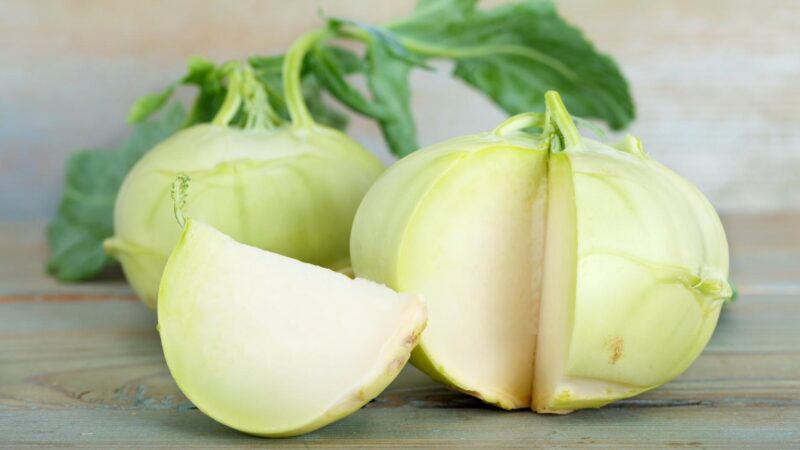
- The name kohlrabi comes from the German word ‘kohl’ meaning cabbage and ‘rabi’ meaning turnip.
- This veggie originates from Northeast Europe.
- Back in 1554, a European botanist described kohlrabi for the first time.
- In the 16th century, this veggie was widely known in Germany, Italy, England, Tripoli, Spain, and the Mediterranean area. Today, the countries that produce the most kohlrabi are Germany, Austria, and Switzerland.
- The height of this plant can be between 25-40 cm.
- The largest kohlrabi was grown in the USA, by Scott Robb. It weighed almost 97 pounds.
- Many varieties of kohlrabi are grown. These are some of them are White Vienna, Grand Duke, Purple Vienna, Gigante, White Danube, and Purple Danube.
- The flesh of kohlrabi is crispy and slightly sweet. The flavor is similar to broccoli, or the cabbage heart (except sweeter). The young kohlrabi is quite sweet and the texture resembles a mix of cucumber and radish. The matured kohlrabi is quite chewy, woody, and even unpalatable.
- The leaves of kohlrabi can be purple or green.
- Certain kohlrabi varieties are cultivated as mostly cattle food.
- We usually prepare kohlrabi in these ways: steamed, braised, stir-fried, or stuffed.
- Kohlrabi is harvested in October.
- The skin of kohlrabi is quite tough, that’s why you have to peel it.
- For reaching full maturity, kohlrabi requires a time period of 45-60 days.
- In the fridge, kohlrabi can last up to a few weeks.
We have also made a full list of foods that guinea pigs can and can’t eat (150+ Types of Foods). Be sure to also check our recommended products page for everything you will ever need to assure a happy life for your guinea pigs. Hope this information was helpful and you have found the answer you were looking for.
List of Sources
Nutrient Requirements of Laboratory Animals: Fourth Revised Edition
The Effects of Diet on Anatomy, Physiology and Health in the Guinea Pig
